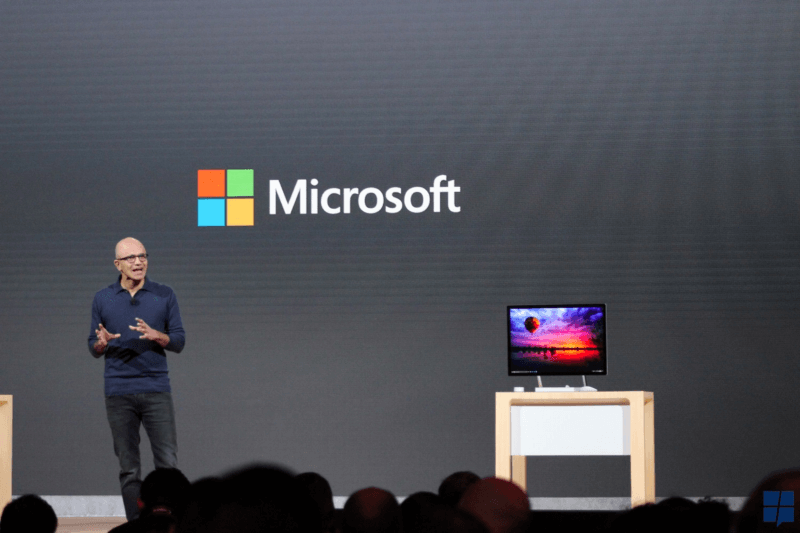Un outil collaboratif d’entreprise peut-il encore faire la différence ?
26 mai 2017 - Auteur : Laetitia VitaudCet article est uniquement disponible en Anglais
Nearly fifteen years ago author Nicholas Carr started a twenty-year debate about the criticality of IT for today’s companies with an opinion piece titled “Why IT Doesn’t Matter” and then a book Does IT Matter: Information Technology and the corrosion of competitive advantage (2004). Carr’s main argument was that IT has become a commodity that now delivers little competitive advantage to the companies that invest massively in IT systems. As the returns on investment are significantly lower than they used to be, he wrote, companies should rethink how much they spend on IT.

Tech and business history since 2004 have proved Nicholas Carr right. Never before has IT been such a cheap commodity. Carr could not have foreseen to what extent Amazon would provide IT as-a-service to every company that needs it, nor could he have anticipated how fast cloud-based applications and open-source software would commoditize IT. Almost every IT need that used to require solid financial investments has now been turned into a modest software-as-a-service variable cost. Only older companies straddled with the heavy costs of integrating and simplifying their systems so as to be able to catch up with the young and lean are now faced with huge IT costs.
When it comes to IT collaboration tools — many IT tools are ultimately about making it easier to work together and communicate — the commoditization trend seems very clear. There are more collaboration tools to choose from than ever before, making asynchronous collaboration easier and cheaper. The most groundbreaking tools have been copied and commoditized. Many offer the same features. Many look very much alike. So can such tools still provide competitive advantage?
In 2014 when Slack launched (see our WillBe Group article about Slack), the app became immensely popular with startups and made other tools seem old-fashioned. Slack became a symbol of the increasingly popular remote and asynchronous work model. Now it is challenged by new products developed by giants like Microsoft (Teams) and Facebook (Workplace), that are big enough to seduce a wide range of large corporate clients, so these tools will no longer be the privilege of a few more “advanced” companies. Can they still make a difference?
Never put tools before vision and culture
Large-scale IT investments have often been used as a proxy for managerial and strategic transformation. But naturally tools can never replace a vision. Without the adequate culture the tools will go unheeded by the people who should be using them. They will have absolutely no impact. If company communication is impeded by stifling hierarchy, process and a culture of secrecy and silos, there is very little any tool can do to change that.
In large corporations, successful ERP (Enterprise Resource Planning) projects will force organisational change that includes and involves everyone in the organisation, all of its processes, organisation and management. If it is seen as only an “IT issue”, it will in all likelihood have little transformational impact…or result in complete failure. History is filled with examples of such failures. When the systems are modified to fit the organisation in its existing complexity (rather than the other way around), they are doomed to fail.
Indeed culture is the main factor in the success or failure of information systems (IS) adoption, which is why more and more studies in IS literature address the subject of cultural issues: “Culture is becoming increasingly important given the adoption of groupware applications, enterprise resource planning systems and other internet-based systems by organisations which support cross collaboration and require greater user participation at all levels”, wrote Stephen Jackson in this paper. The single most common reason for failure of adoption is the mismatch between company culture and the IS introduced.
Traditional corporate information systems tools are not easily adopted by everyone in the organisation because they are sophisticated multi-purpose tools designed to be used by professionals. They are rarely intuitive. They require a lot of training, managing and evangelizing. No employee could use ERP software without proper training, management and evangelisation. Because the success of these tools requires a big-picture view of an organisation’s overall structure, its infrastructure legacy and its human resources, it can’t be successful without an all-encompassing vision and effective leadership. Only then can it have some transformative impact.
However, an increasing number of tools have been adopted and experimented with by the employees without the explicit approval of their management… So often that one may wonder if tools can still be imposed from the top down.
Most collaboration tools are consumer apps, not corporate systems
Transformative tools used to be developed (by and) for corporations. At the beginning of the history of IT, every innovation was a corporate innovation. After all, computers were first designed for organisations, not people. However since the start of the personal computer revolution, more and more usage innovations have been driven by the empowerment of individuals. Now innovation largely starts with consumers…and dies with businesses.
As a result, more and more of the tools used by employees were not even chosen or validated by their companies. A lot of these tools are used to help cope with the difficulties associated with the use of corporate tools, such as:
- Looking for information — 51% of people waste an hour a day just looking for information;
- Duplicating work — 38% of employee time is lost that way;
- Collaborating internally;
Whenever possible (when it is not explicitly forbidden and made impossible) employees have secretly or openly used DIY methods, bring-your-own-device (BYOD) and consumer apps to fill in the gaps of the corporate tools. The sophisticated built-in video-conferencing tool doesn’t work today? Fine, let’s use Google Hangout or Skype instead. Your colleague from across the Atlantic won’t answer your emails? OK, let’s just send him an instant message on Facebook. Etc.
Increasingly two parallel worlds have developed that barely overlap: one corporate IT world that requires a lot of managing effort and must struggle with low adoption rates due to complexity, and a consumer IT world that is unofficially replacing the first. All of this presents a series of difficulties for companies, as more and more critical data is exchanged outside the corporate systems. In the case of the US Department of State, Secretary Hillary Clinton’s “private emails issue” posed security issues. Even when security issues aren’t as critical as they are for the Department of State, the fact that more communication happens outside corporate systems is a worrying sign of increased irrelevance…

The latest collaboration tools are consumer apps fighting for gigantic markets
Slack is “the classic Silicon Valley accidental success”. With roots in the consumer video game industry, Slack is now used by more than five million people worldwide. Its success can be accounted for by the company’s ability to leverage dense data about how people use a product and develop ways to make their users feel good about using it. Almost overnight it made last-generation tools such as Basecamp and Hipchat seem outdated. The app grew tremendously fast mostly by word of mouth, which is not the typical way corporate software usually gains new customers. In 2016, Slack was valued at nearly $4 billion.
Today Slack seems to have reached a point of near saturation. It has conquered the startup world but seems unable to make inroads into the more traditional corporate world. Moreover, Slack’s success has been studied in-depth by digital giants, who have developed their own products. Microsoft launched its product Teams at the end of last year. So did Facebook, with Workplace. Both Microsoft and Facebook are big enough to seduce large corporate clients and conquer large markets.
According to critics, Teams unveiled by Microsoft CEO Satya Nadella late last year, looks a lot like Slack: “When viewing demos or screenshots of Microsoft Teams, you could be forgiven for confusing it with a new version of Slack. The user interfaces look extremely similar, and it uses the same general “channels” and individual/small group chat design language”. Rather than try to reinvent the wheel, Microsoft has bundled together its strengths in Office (online apps), Azure (cloud-based file management), Skype, Exchange servers and security. Teams also includes Slack-like features like animated GIFs and bots. Teams’ useful “WhoBot”, for example, was designed to find people in your organisation according to position, specialty or assignment.

As Teams is “offered” as a free add-on to existing Office 365 enterprise subscribers, it could instantly target millions of new users. Microsoft’s strategy is one of “bundling”: there’s an extra incentive to stick to 365 for the new ‘free’ feature, or conversely, to try out the new feature when you’re certain to continue to use 365. Because Microsoft’s corporate strike force is still unparalleled, Teams could be widely adopted by Microsoft’s existing clients over the next months and years. However, as is often the case with bundle offers, many users are not aware of everything that is in the bundle and may ignore the app however good it actually is.
Unlike Microsoft, Facebook is making inroads into unfamiliar territory: selling products to companies is not in Facebook’s original DNA. The B2B approach is new and represents a challenge. But Facebook is already used by nearly 2 billion people worldwide. Its intuitive design and popularity account for higher adoption rates. Most users are intuitively aware of how the platform works. There’s no need for a manual and a training programme. The mobile-based consumer app could become one the most powerful enterprise software in enterprise software history.
Facebook: a unique example of a consumer product packaged as a corporate product
So many users are familiar with Facebook — as of today, Facebook counts 1.936 billion active users worldwide — that no other application could possibly compare. Facebook has been used by professionals and for professional purposes for many years now. It was only a matter of time until Facebook decided to actually launch a platform for professionals. So far in the companies that have used Workplace, adoption rates have been higher than what they usually are for such tools.
Using Workplace can be described as a bottom-up approach to corporate software. Many companies that have tried out Workplace to do away with rigid and static work methods to use more agile ways of communicating, have observed significant change in employee communication and employee engagement. Renault Retail Group is one example: the distribution branch of automotive manufacturer Renault is a decentralised organisation of 12,000 people, 40% of whom had no access to corporate communication tools. There was a strong need for increased horizontal communication.
Provided there is CEO engagement, the use of Workplace can affect a company’s organisation in unprecedented ways. With Facebook, some employees become ambassadors and “champions on the ground” who may not previously have had the opportunity to share their passion, their work ethic or their ideas with their colleagues across different locations. Horizontal communication generates new informal groups that make the company more agile and responsive to various feedback.

In many ways, as Facebook illustrates, the extended use of consumer tools within organisations is about making the employee journey as seamless as the best customer experience. The consumerization of corporate software reflects and fuels the consumerization of the employee experience: being able to use seamless tools and eliminate as much bureaucratic friction as possible become a recruiting and an employee retention tool.
Conclusion
There are many different collaboration tools on the market today: it’s never been easier to work together and to work remote. In many ways these tools have become a commodity: they’re cheap and many of them offer features that can no longer provide a durable competitive advantage.
Which tool is used does not matter much. What does matter, though, is how many people in the company will use it. And adoption rates vary a lot across companies. Sometimes tools are paid for, that are used by very few people. In those cases the transformational nature of the tools is very limited.
Whatever the tool, it is critical to aim for cultural and managerial changes that will make it possible to leverage all the talents in the company and create new horizontal communication. For the tool to be widely used it must be in tune with the culture of the employees and managers supposed to use it. A cultural mismatch will result in failure. Microsoft Teams might work very well with teams composed of Excel aficionados (consultants for example) whereas retailers who have teams of employees who use nothing but consumer apps on their smartphones would communicate better with Facebook.
Tools may not change culture and organisations on their own, but they do reflect a company’s culture, organisation and strategy. They can have a tremendous transformational impact if they are adopted massively and passionately


